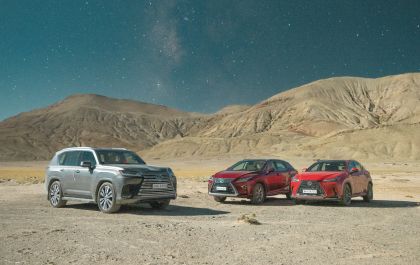By Sabrina Fatma Ahmad
Despite director Taneem Rahman Angshu’s claims otherwise, parallels between Hoichoi web-series Buker Moddhye Agun and the life, loves, and death of 90s film superstar Salman Shah are simply too many to ignore
Who has lived through the 90s in Bangladesh and not heard of Salman Shah? You didn’t even need to be into Bangla movies to have heard about him; his face, and that signature bandana-and-shades combo graced billboards, posters, and barbershop photos everywhere.
Even decades after his life was tragically cut short, the mark he left behind in Dhaliwood is indelible. The mystery surrounding his death, and the legal brouhaha that ensued in its aftermath – and which occasionally rears its head to this day – has kept the larger-than-life star very much alive in the hearts and minds of his countrymen.
So to write a story around the unsolved death of a 90s film star was enough to get fans and conspiracy theorists fill in the blanks and draw comparisons with the late Shah, and fire up Hoichoi’s view count in the process. And playing cute about the “coincidences”? Brilliant marketing. Buker Moddhe Agun deals with the unsolved death of a celebrity actor being reopened decades after a conspiracy theory video goes viral, and a down-on-his-luck cop with a reputation for a bad attitude is pulled back from the mufassil to solve it.
In the broad strokes, there are many similarities to the story of Salman Shah: The character of Arman Rahman (Yash Rohan) is a beloved film star, exciting crowds wherever he goes. He is a hitmaker, who is also linked to other actresses, particularly the screen darling Shabnam (Shahnaz Sumi), spurring endless conflict with his beautiful wife Sabina (Tama Mirza). There’s Khalid (Tariq Anam Khan), a corrupt businessman and producer with underworld links, who bears a loose resemblance to Aziz Mohammed Bhai. Arman’s mother, played by Tania Ahmed, fans the media frenzy, in a move similar to appeals made by Salman Shah’s mother Nilufar Chowdhury.
But beyond these incidental resemblances, once one actually gets to the watching of the series, one can accept this as a work of fiction, if for nothing else than because how paper-thin the character writing is. While Arman’s case is the driving force of the show, the real protagonist is that of ASP Golam Mamun, played by Ziaul Faruq Apurba, who is making a buzzworthy departure from the romantic roles he is better known for.
As Golam Mamun, Apurba delivers a sharp and principled but temperamental police officer, with a troubled past and a short fuse. As he blusters and bullies everyone in the name of trying to crack the case, we meet the rest of the cast, each shadier and more unsavory than the previous one. Other than the charismatic but troubled Arman, each character seems to be constructed out of tropes, aesthetics, and Gen X values that haven’t evolved since the 90s, and show very little character growth as the series progresses. The women in particular are boxed into two categories – victim or villain, occasionally both, but never more than these two.
While the mood lighting and music create a certain ambience, they never fully manage to compensate for the low production values of the show. The minor anachronisms of wardrobe and diction don’t add to the authenticity of the time they are trying to replicate. Interestingly, this doesn’t detract from the experience of watching the show, but lends it a kind of fantasy film noir worldbuilding, the way the John Wick franchise creates a highly stylized world.
The use of the unreliable witnesses and versions of the truth add to the suspense, as one gets used to the conflicting narratives in each episode. One shouldn’t be too surprised if a Mafia-style board game comes out of this. The most meaningful line is delivered by ASP Golam Mamun in the final episode, when his niece Peu asks him about the truth behind all these stories by the survivors. “The truth is that Arman is dead,” he deadpans.
Buker Moddhye Agun probably needed the Salman Shah parallels for marketing purposes, but it functions well enough as a noir thriller on its own. If one is not too hung up on character-driven stories, the twists and turns and whodunnit aspects of the investigation make it a decent option for a show that doesn’t demand much from its viewers.













